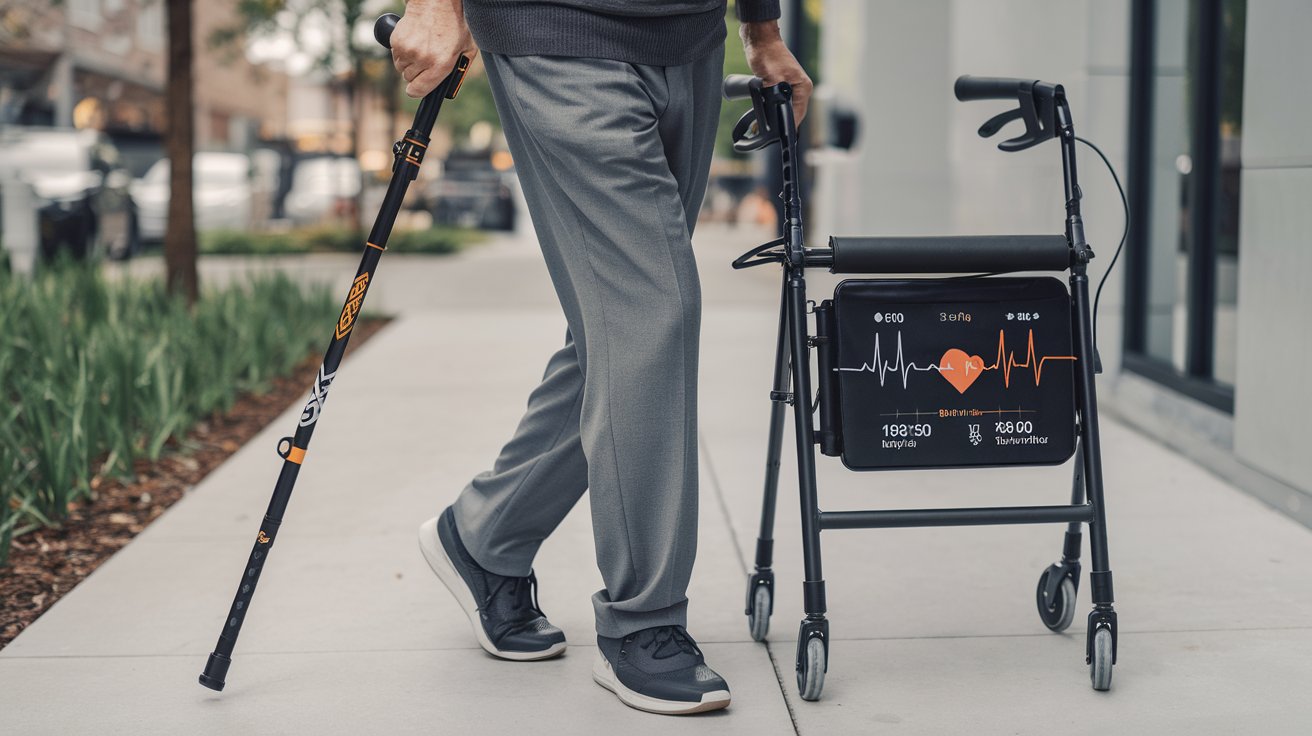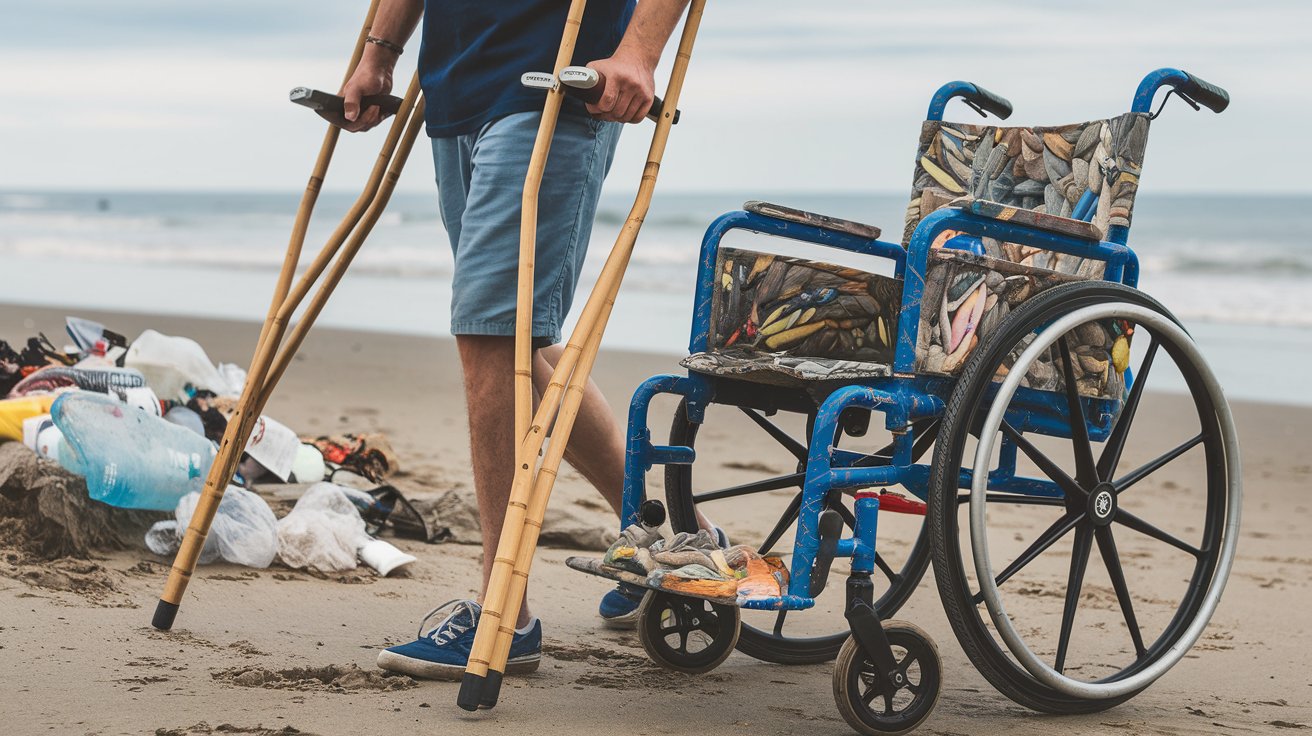Rollator vs. walker vs. cane: Which is right for you?

The right mobility aid can be a game-changer for individuals with mobility challenges, helping them maintain independence and improve their quality of life. Whether you’re recovering from an injury, managing a chronic condition like arthritis, or simply in need of extra stability, mobility aids like rollators, walkers, and canes offer invaluable support.
However, with so many options available, it’s not always easy to determine which aid is best suited to your specific needs. Each type has unique features and benefits rollators offer increased mobility and convenience, walkers provide stability and support, and canes offer a lightweight, portable solution for mild assistance.
In this article, we’ll break down the key differences between rollators, walkers, and canes, helping you understand their pros and cons, who they’re best suited for, and how to choose the right one for your lifestyle. Whether you’re looking for enhanced support or more freedom to move, this guide will help you make an informed decision.
Table of Contents
Overview of Rollator vs. walker vs. cane
When it comes to mobility aids, it’s important to choose the right one that fits your needs. Let’s take a closer look at rollators, walkers, and canes to see what each of them offers and who they’re best for.
What Are Rollators?
Rollators are mobility aids with wheels on all four legs, making them easy to move without needing to lift them. Most rollators come with a seat and a storage basket, making them perfect for people who need to take breaks or carry items while moving around.
Key Features:
- Four wheels for smooth movement.
- A built-in seat for resting when needed.
- Brakes to ensure safety and stability.
Best For:
Rollators are ideal for individuals who still have some balance and strength but need help covering longer distances or enjoy the convenience of taking seated breaks. They’re perfect for active users who spend time outdoors or need a little extra support while staying on the go.
What Are Walkers?
Walkers are sturdy frames that provide excellent support for those who struggle with balance or need more stability. Some walkers come with wheels on the front legs (2-wheel walkers) to make moving forward easier, while standard walkers without wheels offer maximum stability but require lifting to move.
Key Features:
- Four sturdy legs for maximum support.
- Optional wheels for easier movement (2-wheel walkers).
- Lightweight but highly stable design.
Best For:
Walkers are a great option for people who need extra help with stability and balance. They’re especially useful for those recovering from surgery, dealing with significant weakness, or needing to feel safe while walking shorter distances.
What Are Canes?
Canes are the simplest and most portable mobility aid, offering lightweight support for mild balance issues or joint pain. They come in different styles, such as standard canes, quad canes (with four small legs at the base), and folding canes for easy storage.
Key Features:
- Lightweight and easy to carry.
- Adjustable height for personalized comfort.
- Options like quad bases for extra stability.
Best For:
Canes are best suited for individuals who need minimal support, such as people with mild arthritis, slight balance issues, or occasional joint pain. They’re a great choice for anyone looking for a simple, portable solution.
Comparing Rollators, Walkers, and Canes
When it comes to mobility aids, understanding the differences between rollators, walkers, and canes can help you decide which one best suits your needs. Here’s a breakdown of how they compare in key areas:
Mobility and Support
- Rollators: Rollators are great for people who can walk but need extra support for balance. They have wheels on all legs, making them easy to push, and they often come with a built-in seat for rest breaks. Ideal for active users who can handle a bit of movement but tire easily.
- Walkers: Walkers offer the most stability. They’re perfect if you have trouble with balance or need significant support while walking. Some come with wheels on the front for smoother movement, but the basic version requires lifting it slightly with each step.
- Canes: Canes are the simplest option, offering just enough support for mild stability issues. They’re great if you only need occasional help, such as when climbing stairs or navigating uneven surfaces.
Portability and Ease of Use
- Rollators: Rollators are lightweight and usually foldable, but their larger size might make them harder to transport in small cars or tight spaces.
- Walkers: Standard walkers can be bulkier and harder to carry, though some lightweight models fold flat for easier storage.
- Canes: Canes win here! They’re small, lightweight, and super portable. Some even fold up to fit in a bag or purse.
Comfort and Ergonomics
- Rollators: With ergonomic handles and adjustable heights, rollators are designed for comfort. Plus, their seats and storage baskets add convenience.
- Walkers: Walkers provide a sturdy frame, but they’re not always as comfortable for long-term use unless they have padded grips.
- Canes: Canes are simple but effective. Look for options with cushioned or contoured handles to reduce strain on your hands.
Cost and Maintenance
- Rollators: Rollators are usually the most expensive of the three, but their added features, like brakes, seats, and storage, make them worth it for many. Maintenance may involve checking the brakes and wheels.
- Walkers: Walkers are more affordable and require little upkeep—just ensure the rubber tips or wheels are in good condition.
- Canes: Canes are the budget-friendly option, and maintenance is minimal. Just keep an eye on the tip for wear and tear.
Knowing these differences, can match the right mobility aid to your needs, ensuring a balance of support, convenience, and comfort. Each option has its strengths, so think about your mobility level, lifestyle, and preferences when making a choice.
Real-Life Scenarios: Which Aid Works Best?
Choosing the right mobility aid often depends on your specific situation and how much support you need. Let’s look at some common scenarios and which aid might work best for each:
Mild Stability Issues: Cane vs. Walker
If you occasionally feel unsteady or have mild pain in one leg, a cane might be all you need. Canes are lightweight, easy to carry, and great for providing a little extra support when walking.
However, if you find it hard to balance or need help on both sides, a walker could be a better choice. Walkers offer more stability and are ideal for those who need a bit more support to feel safe while moving around.
Moderate Mobility Challenges: Walker vs. Rollator
For moderate difficulties, like trouble walking longer distances or standing for extended periods, a walker or rollator may be the right fit.
- Walker: A standard or 2-wheel walker is perfect if you need to lean on something for support and prefer a slower, more stable pace. It’s a good option for indoor use or short trips.
- Rollator: If you’re more active and want something that helps you move quickly, a rollator is a great choice. It’s equipped with wheels and a seat, so you can rest when needed, making it ideal for both indoor and outdoor use.
Active Lifestyles: Rollator vs. Cane
If you’re always on the go and need a little extra help to stay active, a rollator or cane might work well:
- Rollator: Best for those who enjoy outdoor activities, shopping, or visiting friends. The seat and storage compartments make it convenient for longer outings.
- Cane: A good choice for lighter support during quick errands or short walks. It’s easy to carry and store, making it perfect for a busy, independent lifestyle.
Post-Surgery or Rehabilitation: Walker vs. Cane
After surgery or during recovery, your doctor or therapist may recommend a walker or cane:
- Walker: Provides maximum support and stability if you’re regaining strength and balance. A walker is particularly helpful during the initial stages of recovery.
- Cane: As you recover and become stronger, you may transition to a cane for less intensive support.
By thinking about your daily routines and challenges, you can choose the mobility aid that best fits your needs. Remember, if you’re unsure, consult with a healthcare professional who can guide you based on your specific situation!
Consulting Professionals for Advice
When choosing a mobility aid, consulting a healthcare professional can make all the difference. Physical therapists and occupational therapists are specially trained to assess your mobility needs and recommend the best options for your condition. They can also teach you how to use your aid properly to prevent strain or injury.
Your doctor can help too! If you have a medical condition like arthritis or are recovering from surgery, your doctor can guide you toward the aid that aligns best with your health goals. They might even suggest a combination of aids—for example, starting with a walker and transitioning to a cane as your strength improves.
Don’t hesitate to ask questions. Professionals can explain how each mobility aid works, demonstrate the best techniques for using it, and even help you find places to purchase or rent quality equipment.
FAQs About Rollators, Walkers, and Canes
Q: Can I use a rollator instead of a walker?
A: It depends on your needs. Rollators are great for those who can walk steadily but need occasional breaks, thanks to their built-in seats. However, if you need more support to stand and balance, a standard walker might be safer.
Q: What is the best cane for arthritis?
A: Look for a cane with an ergonomic handle, such as one with a cushioned or contoured grip. A quad cane, which has a broader base, offers extra stability and is particularly helpful for arthritis in the knees or hips.
Q: How do I transition between mobility aids?
A: Start by consulting your doctor or therapist. They can guide you on when and how to transition—for example, moving from a walker to a cane as your strength improves. Practice is key, so take your time to get comfortable with the new aid before using it regularly.
Q: Can I use a mobility aid outdoors?
A: Absolutely! Many aids are designed for indoor and outdoor use. For outdoor terrain, look for aids with sturdy, non-slip rubber tips or large wheels (in the case of rollators) to ensure stability and safety.
Final Thoughts
Finding the right mobility aid whether it’s a rollator, walker, or cane can transform your daily life by providing the support and confidence you need to move freely and safely. Each option has its own strengths: rollators are ideal for those with moderate mobility and an active lifestyle, walkers provide maximum stability for those needing more support, and canes are perfect for lighter assistance and easy portability.
The key is to choose the aid that matches your specific needs, lifestyle, and mobility goals. Don’t hesitate to seek guidance from healthcare professionals, as they can offer personalized advice and training.
Remember, the right mobility aid isn’t just about getting from one place to another, it's about enhancing your independence and improving your quality of life.
Take your time, try out different options, and choose the one that feels best for you. With the right mobility aid by your side, you’ll be ready to take on each day with confidence and ease!
